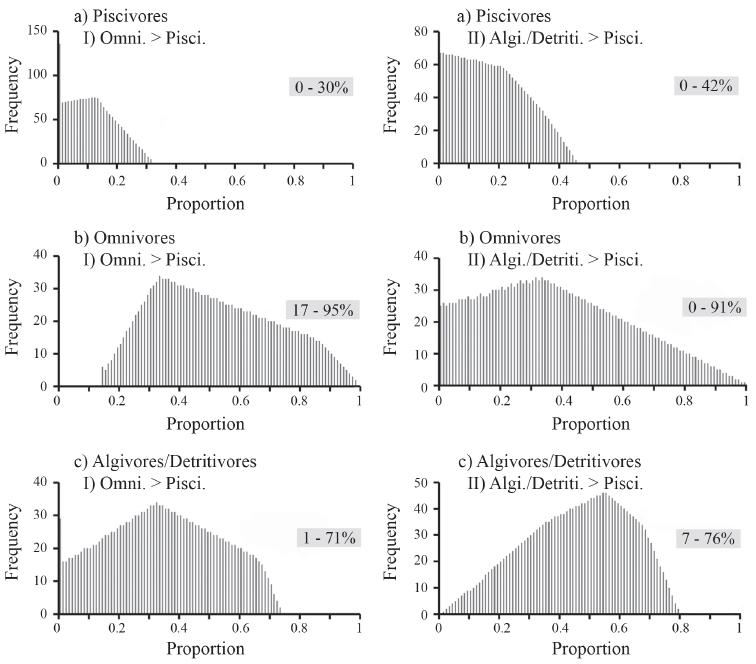Using stable nitrogen and carbon isotope signatures, we investigated the trophic ecology and identified potential prey fish groups supporting the giant Arapaima within floodplain lakes of the Essequibo River basin in southwestern Guyana. Morphological descriptions of feeding structures and digestive tract are presented together with preliminary data on Arapaima diets. Stable isotope results suggest that algivorous/detritivorous and omnivorous fishes contributed most to Arapaima biomass, and generally, that was consistent with what is known about Arapaima diets. Stable nitrogen isotope ratios for piscivorous fishes in these lakes were higher than nitrogen isotope ratios for Arapaima, indicating that piscivorous fishes are unlikely to constitute a major source of energy for Arapaima. This population of Arapaima has an intestine averaging 1.45 times total body length, relatively small teeth, and numerous, closely-spaced gill rakers. These morphological features, together with isotope data, support our inference that Arapaima are secondary consumers and may be better characterized as omnivores and not top predators.
Conservation; Essequibo River basin; Management; Osteoglossidae; Stable isotopes






